
Are You 18 Or Over?
YesOr
No By clicking yes, you certify that you are over 18. By using this website, you agree to our legal disclaimer.605+ Cannabis Strains over 20 Breeders worldwide.
Table of Contents
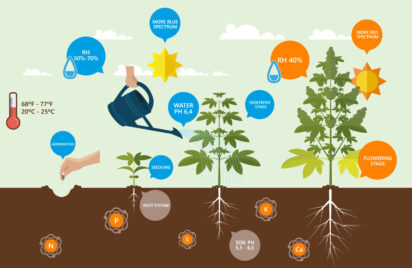
You want to give your cannabis plants everything that they need to thrive, but it can be tough to figure out the right schedule for feeding your plants nutrients. Here, we’ll take a look at everything you need to know about giving your plants the exact nutrients they need to grow and thrive.
We all know the basics of what plants need to grow–light, carbon dioxide, and water–but plants sometimes also need a supplement of nutrients in addition to what their roots are able to pull from the soil.
When growing cannabis, you’ll need to consider the specific needs of your plants to decide what nutrients are necessary for optimal growth. You’ll also need to consider the size of your plants, as well as their age.
Starting with the right soil is a smart way to help your cannabis plants get off to a healthy start. Research the type of soil that’s best for your cannabis plant strain, but don’t be surprised if you find that you need to make some changes along the way.
If you decide that you need to switch your plants over to a new soil, it’s smart to wait until it’s time to transplant. This can help your plant adjust, as the old soil will still be attached to the roots, allowing the roots to ease into their new home.
If your plants are struggling with drainage and you want to add some new components to the soil, you may want to think about adding perlite (so that it makes up about 30% of the soil) and vermiculite (so that it makes up about 10% of the soil), as these can help improve drainage and help your plants get the oxygen that they need to grow.
Your TDS stands for total dissolved solids, and as you begin to research how to feed your cannabis plants, you’ll likely come across this term often. Your TDS can give you an idea of how many nutrients and minerals are in your watering solution, but won’t tell you the actual makeup of the nutrients. While TDS can be a helpful number to help you see whether you’re headed in the right direction, you won’t want to rely on TDS alone to give you an idea of whether your plants are getting all that they need.
While following a feeding schedule for your cannabis plants is smart, you’ll also need to keep an eye on them to determine whether your schedule needs adjustment. It can take some time to get to know your plants and figure out exactly what they need to thrive.
When you’re ready to transplant your seedlings into a larger home, that means you’ve entered the vegetative stage. During this stage of growth, it’s smart to use store-bought soil to ensure that your plants are getting off to the right start.
You’ll want to choose soil that has solid water drainage and retention properties, and you’ll also want to keep an eye on the pH level of the soil you choose. You’ll want to shoot to maintain a pH of 6.0 to 6.5 for optimal growth.
Instead of choosing a soil mix that’s heavily fertilized, you’ll want to manually add nutrients so that you stay in control of giving your plants what they need. In this stage, you’ll want to focus on giving your seedlings the light they need to begin to grow.
During weeks one and two, keep your plants about three and a half feet away from your grow lamps. You’ll also want to only use half of your lamps during this phase, while still giving your plants about 18 hours of light per day. During the second week of the vegetative phase, it will be time to use a fertilizer high in nitrogen to ensure that your plants are getting enough of the crucial growth nutrient.
During the third week of growth, your plants will begin to enter the flowering stage. At the start of week three, it will be time to change your light schedule to 12 hours on, 12 hours off, while using half of the lights. You’ll want to move your plants a bit closer to the lights, about a foot and a half away. Your plants are still heavily in the growing phase at this point, so you’ll want to continue to provide them with the nutrient mix that helped them get through weeks one and two.
You’ll also want to begin giving your plants more water during this phase. Keep the humidity in the room around 60%. During week four, you’ll notice that your plants go through a major growth spurt, and you’ll want to ensure that they stay at least a foot and a half away from your grow lights, even as they begin to expand.
When week four comes to an end, you’ll want to rinse the soil with water at a pH of 6.5.
As you move into the fifth week of growth, you’ll begin to see flower development. At this point, you’ll need to make the switch to a high-phosphorus fertilizer to support growth. In the sixth week of growth, your’ll continue with the high-phosphorus fertilizer, and you’ll also want to ensure that you keep an eye out for any bugs on your plants.
During this phase, you’ll notice that buds begin to grow. You’ll want to flush your soil with water (with a pH of 6.5) at the end of week seven. At the end of week eight, it’s smart to boost the potassium levels of your soil by using a fortified fertilizer. Adding more potassium will help your plant’s buds begin to ripen.
At this point, in addition to keeping an eye out for bugs, you’ll also need to watch for mold.
At this point, you’re getting ready to harvest, and you’ll need to switch up how you’re feeding your plants in order to make sure they’re ready. At the start of week nine, flush the soil, and then feed your plants their nutrient mix at a lower concentration than normal. You may find that the leaves on your plant are starting to die, but fear not–this is normal and to be expected. A few days prior to harvest, stop fertilizer altogether, and just provide your plants with clean water.
Remember, keep an eye on your plants to learn what they need, and depend on their cues more than a schedule to figure out how to keep them growing healthy and strong.
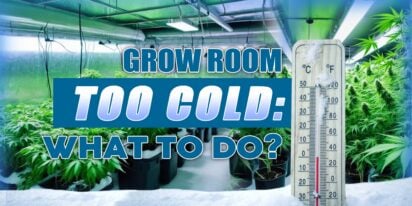
[ez-toc] In indoor gardening, maintaining an optimal temperature within your grow tent is crucial for the health and productivity of your plant

[ez-toc] Welcome to the delightful world of cannafudge crafting, where sweetness meets sophistication, and cannabis infusion adds a unique twis
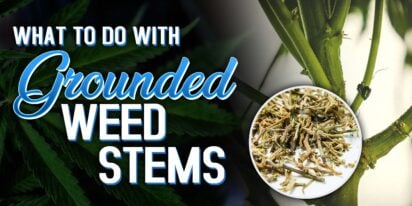
[ez-toc] You’ve finished trimming your weed, but what about those leftover stems? Don’t throw them away! These seemingly useless bits can a

Feeling high can be an exhilarating experience, but it's essential to make the most of it by engaging in activities that enhance the sensation a
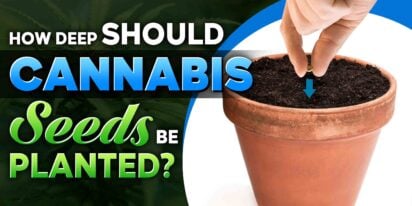
[ez-toc] Starting with planting cannabis seeds might seem simple, but how deep should cannabis seeds be planted for them to grow well. In this
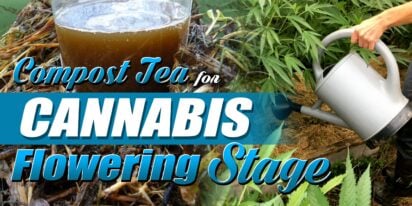
[ez-toc] In the realm of cultivating cannabis, maximizing growth during the flowering stage is a top priority for growers. While various method

[ez-toc] Nutrient burn is a common issue among plant enthusiasts, often resulting from over-fertilization or improper nutrient application. It

[ez-toc] Welcome to our complete guide to dealing with harmful pathogenic mold in cannabis. For those who grow cannabis, preventing mold is vit

In recent years, there has been speculation about “did Shakespeare smoke weed?” This idea originates from a study by South African anthropol
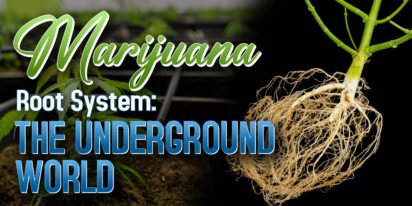
[ez-toc] Welcome to the hidden world beneath the soil – the inside of the marijuana root system. While the vibrant leaves and resinous flower

Are You 18 Or Over?
YesOr
No By clicking yes, you certify that you are over 18. By using this website, you agree to our legal disclaimer.